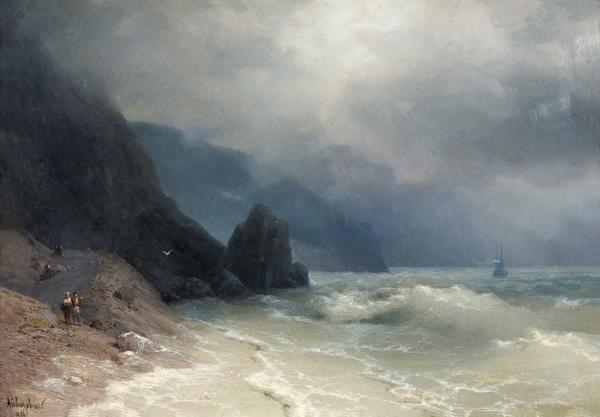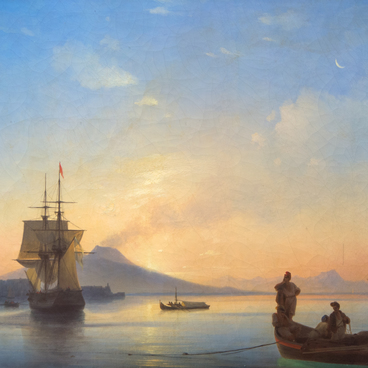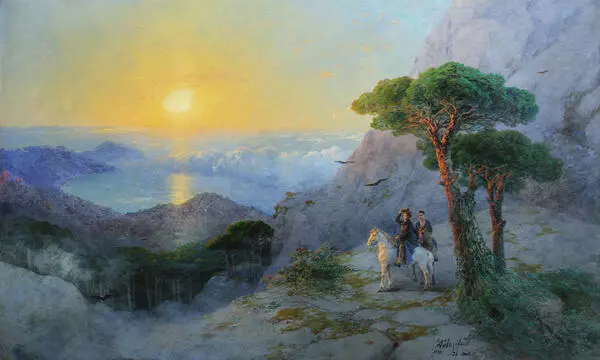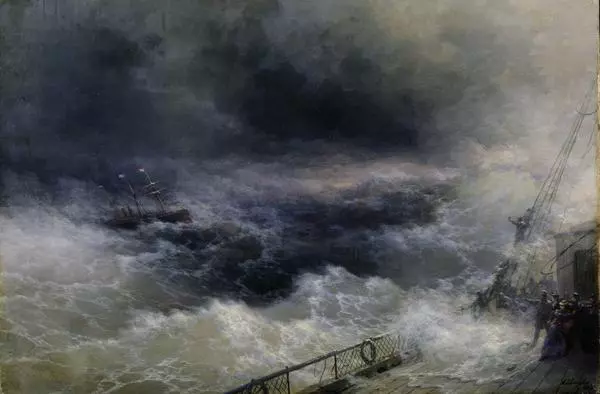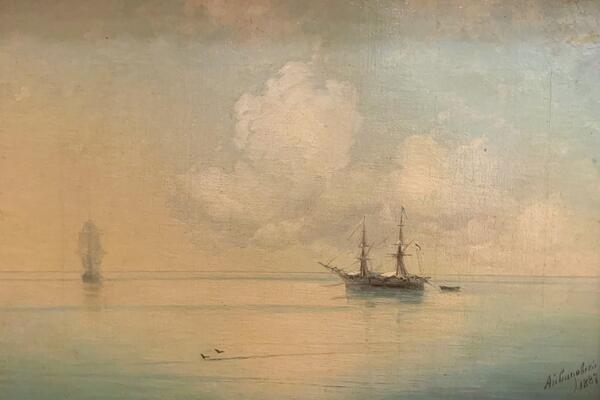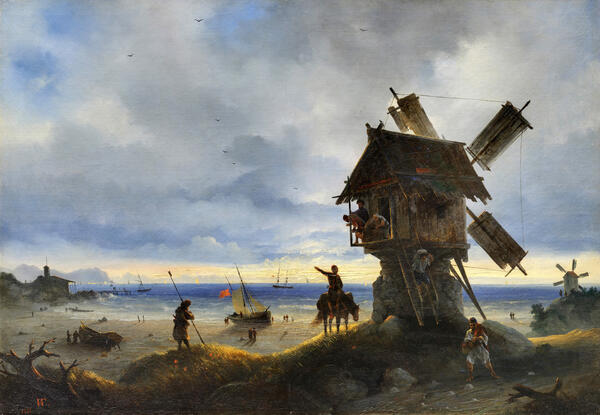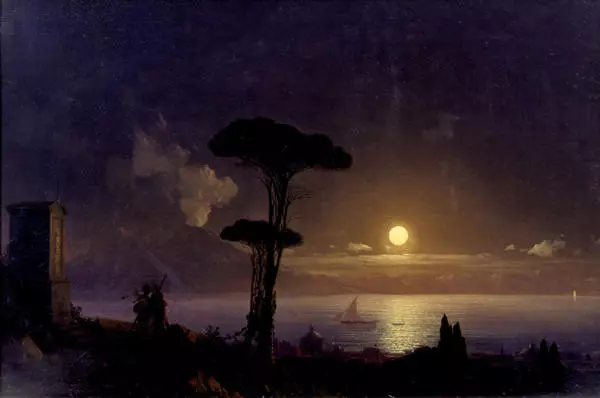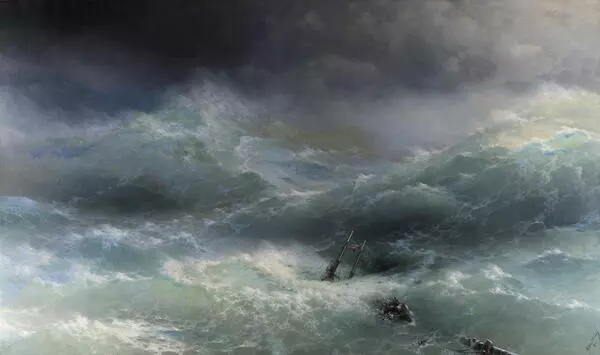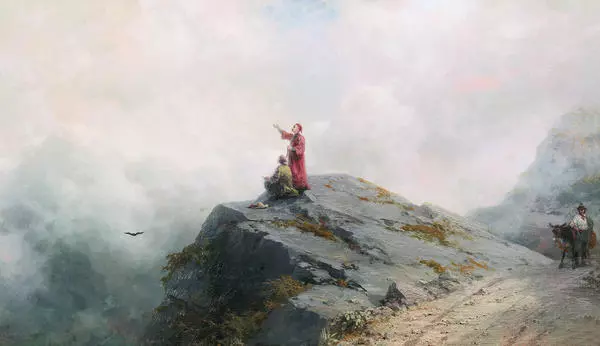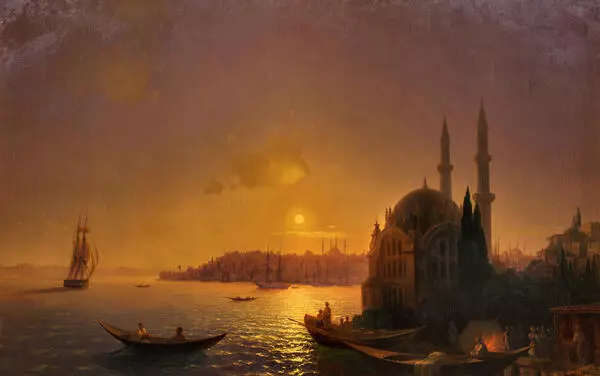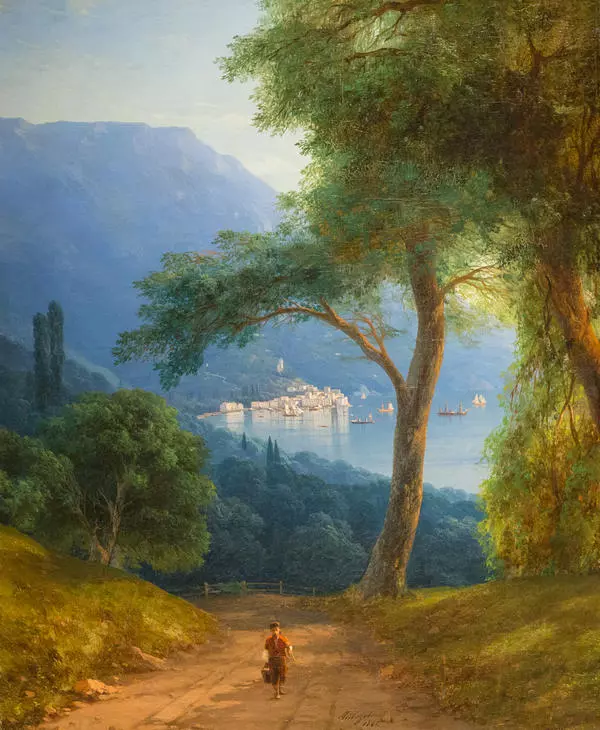1880-s were surprisingly fruitful for Ivan Aivazovsky. In 1880, the artist create the first in Russia public picture gallery in his own house in Theodosia. This was a truly unparalleled decision: prior to that, there were only two museums in Russia accessible to the public— the Hermitage and Rumyantsev Palace. During this period, crowds of young people who wanted to study under the master’s guidance surrounded Aivazovsky. Many of them continued the traditions of the outstanding seascape painter.
1880-s were also very successful for Aivazovsky himself — in his mature years he painted his best pieces. In 1886, the year of creating the Sea Shore, Aivazovsky was preparing for the 50th anniversary of his creative work — the Academy of Arts organised a magnificent celebration of this date. According to the press, the ceremony was truly grandiose. In addition, in his mature years the artist continued to exhibit his paintings abroad. Vladimir Stasov, the arts critic, wrote about the importance of Aivazovsky for Russian art: “Aivazovsky, the seascape painter, was an absolutely outstanding artist, keenly feeling and independently conveying, like no one in Europe, water with its unusual beauty”.
In 1880-s, the artist fully refused from bright lacquer-style painting. His pieces of that period are outstanding for their subtle, but still very expressive palette. Aivazovsky often depicted troubled skies focusing on the beauty and the variety of clouds. This is exactly what we see in the painting Sea Shore. The cliffy coast is visible through the silver veil of the atmospheric moisture. The sea is rough. The waves are breaking with a loud sound at the wonderers’ feet turning into a crystal spill of foam. This theme deprive of any fashionable gloss invites to reflection. People admiring the wilderness are perceived as the artist’s like-minded fellows. This painting is based on keen understanding of nature. Aivazovsky was able to convey in a masterly fashion the movement of curling nimbus clouds and the transparent wave on the foreground.
Ilya Ostroukhov, the artist who had a chance to observe the working process of late Aivazovsky, shared his interesting comment: “The day was stormy, and Aivazovsky made a stop on the beach bewitched by the view of the breaking oceanic waves… Without letting the ocean and the far away mountainous landscape, he slowly pulled out his small notebook and drew just three lines with a pencil — the contour of the distant mountains, the line of the ocean by the foot of those mountains, and the coastal line near himself”.
1880-s were also very successful for Aivazovsky himself — in his mature years he painted his best pieces. In 1886, the year of creating the Sea Shore, Aivazovsky was preparing for the 50th anniversary of his creative work — the Academy of Arts organised a magnificent celebration of this date. According to the press, the ceremony was truly grandiose. In addition, in his mature years the artist continued to exhibit his paintings abroad. Vladimir Stasov, the arts critic, wrote about the importance of Aivazovsky for Russian art: “Aivazovsky, the seascape painter, was an absolutely outstanding artist, keenly feeling and independently conveying, like no one in Europe, water with its unusual beauty”.
In 1880-s, the artist fully refused from bright lacquer-style painting. His pieces of that period are outstanding for their subtle, but still very expressive palette. Aivazovsky often depicted troubled skies focusing on the beauty and the variety of clouds. This is exactly what we see in the painting Sea Shore. The cliffy coast is visible through the silver veil of the atmospheric moisture. The sea is rough. The waves are breaking with a loud sound at the wonderers’ feet turning into a crystal spill of foam. This theme deprive of any fashionable gloss invites to reflection. People admiring the wilderness are perceived as the artist’s like-minded fellows. This painting is based on keen understanding of nature. Aivazovsky was able to convey in a masterly fashion the movement of curling nimbus clouds and the transparent wave on the foreground.
Ilya Ostroukhov, the artist who had a chance to observe the working process of late Aivazovsky, shared his interesting comment: “The day was stormy, and Aivazovsky made a stop on the beach bewitched by the view of the breaking oceanic waves… Without letting the ocean and the far away mountainous landscape, he slowly pulled out his small notebook and drew just three lines with a pencil — the contour of the distant mountains, the line of the ocean by the foot of those mountains, and the coastal line near himself”.

